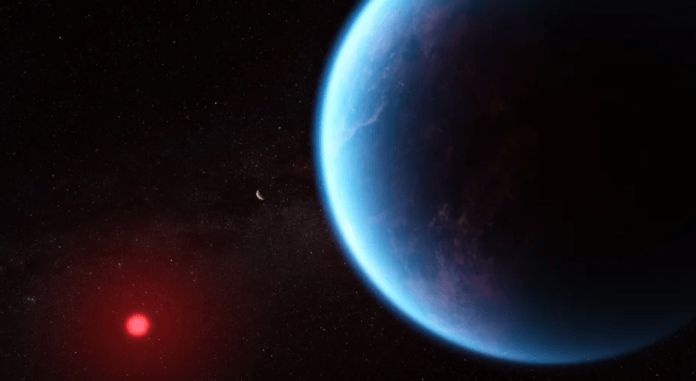Waters may be flowing on the surface of a colossal planet that lies about 120 light-years from Earth, according to new evidence uncovered by the James Webb Space Telescope.
The investigation with the space-based observatory, one of the most advanced astronomy instruments in operation, revealed that the exoplanet K2-18b may have some key features of a planet that could support bodies of water — and life.
Closely orbiting the cool dwarf star K2-18, the exoplanet lies within the star’s habitable, or Goldilocks, zone and is 8.6 times as massive as Earth. An analysis of Webb’s observations found the planet has abundant methane and carbon dioxide in its atmosphere.
The presence of these carbon-bearing molecules, along with a scarcity of ammonia, could indicate an atmosphere rich with hydrogen that surrounds an ocean world, according to a NASA news release.
Carbon is considered the building block of life-forms on Earth.
The Hubble Space Telescope initially spotted evidence of water vapor in the exoplanet’s atmosphere. The finding, described in a September 2019 study, helped scientists home in on K2-18b for further study.
The Webb telescope, which can detect infrared light invisible to the human eye, searched for exactly what elements are featured in the planet’s atmosphere.
And the latest observations of the planet also hint that a very special molecule, called dimethyl sulfide, could be present on K2-18b.
On Earth, dimethyl sulfide “is only produced by life,” according to NASA. “The bulk of the DMS in Earth’s atmosphere is emitted from phytoplankton in marine environments.”
Source: CNN

















